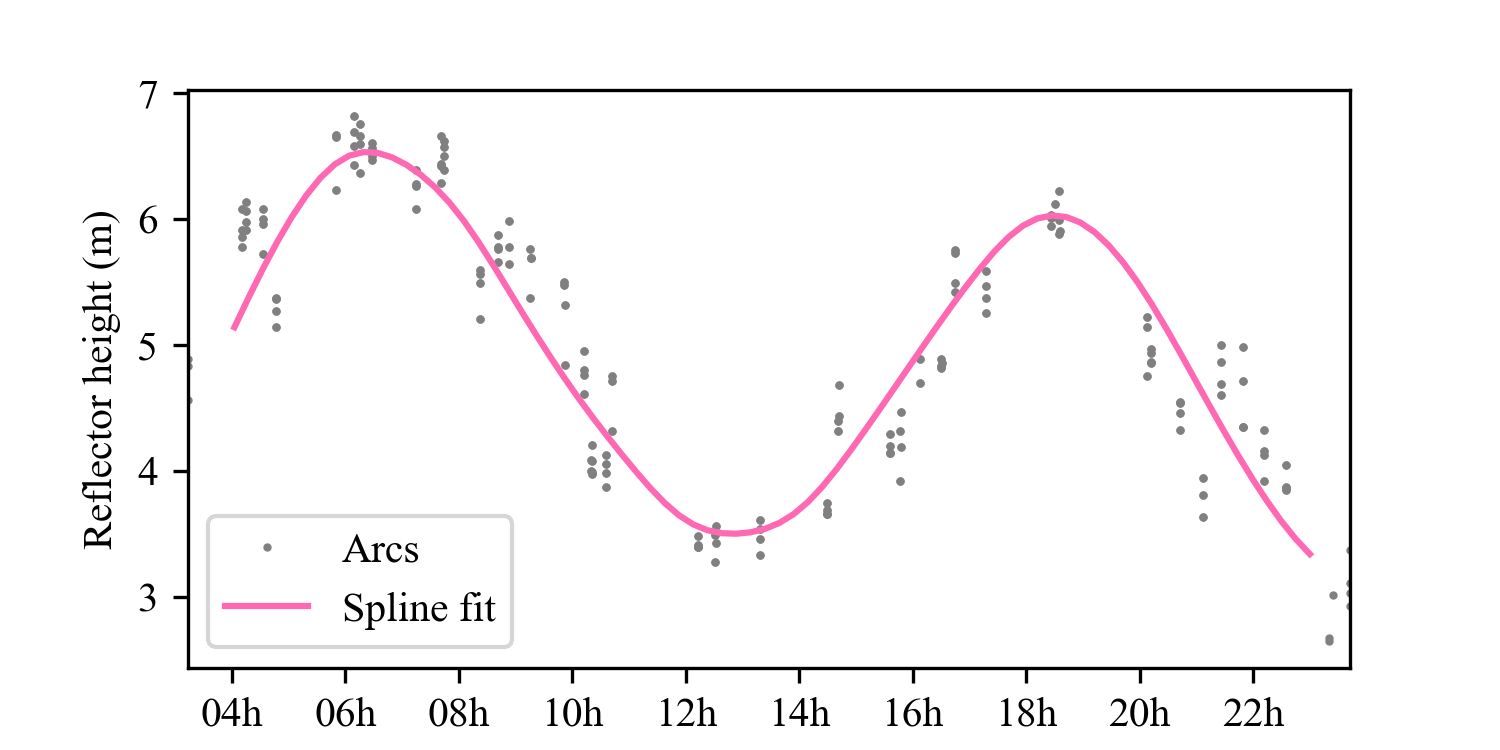This software is to go with "Real-time water levels using GNSS-IR: a potential tool for flood monitoring" by Purnell et al. (Geophysical Research Letters) All code written by David Purnell except for gnssr/make_gpt.py (written by Kristine Larson)
Requires python >= 3.9, git and pip.
git clone https://github.com/purnelldj/gnssir_rt.git
cd gnssir_rt
python -m pip install -e .
Below is an example of how to process one day of data from Saint-Joseph-de-la-Rive.
python init_localproc.py
python main_cl.py sjdlr arcs2splines
this command should produce the following plot:
python main_cl.py [station] [funcname]
[station]corresponds to a file:site_inputs/[station].py(eithersjdlrorrv3s)[funcname]is one ofsnr2arcs,arcsplotorarcs2splinesYou can edit the station file in site_inputs as desired
SNR data to go with the paper can be found here. It can be downloaded using zenodo_get
zenodo_get 10.5281/zenodo.10114719
Note: this will take a few minutes (~ 1Gb of data)
The SNR data format is similar to this format, but with differences on fourth and fifth columns:
- instead of seconds of day in the fourth column it is GPS time
- the fifth column is L1 SNR (there are only five columns)
